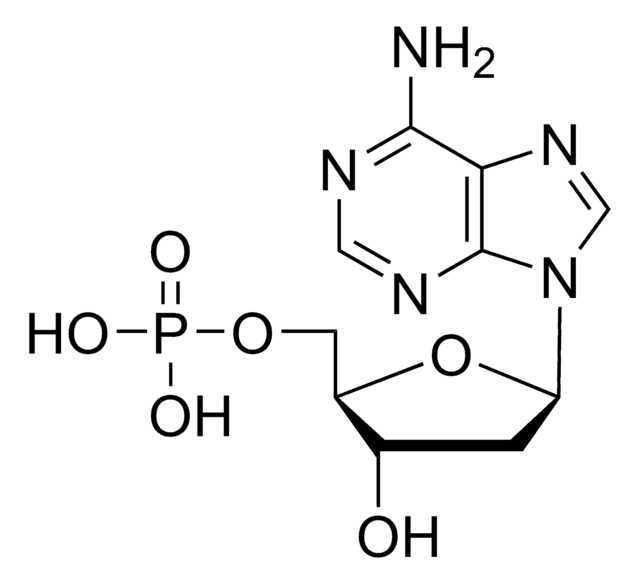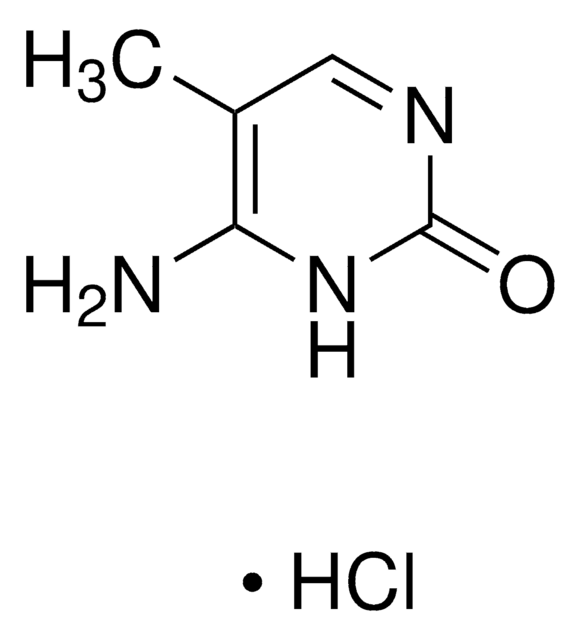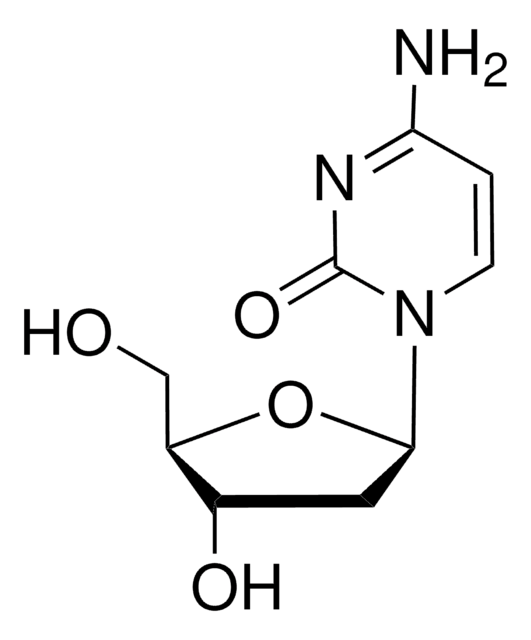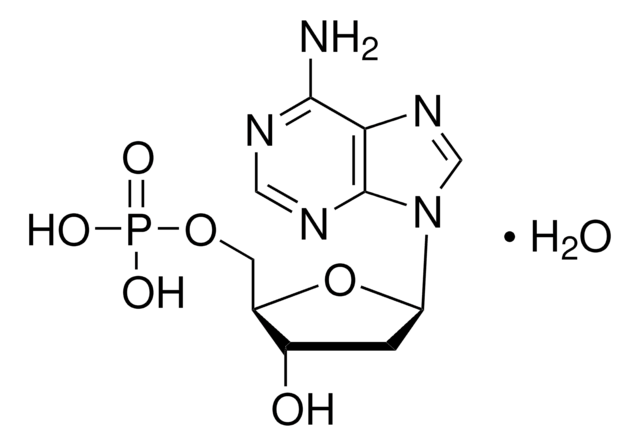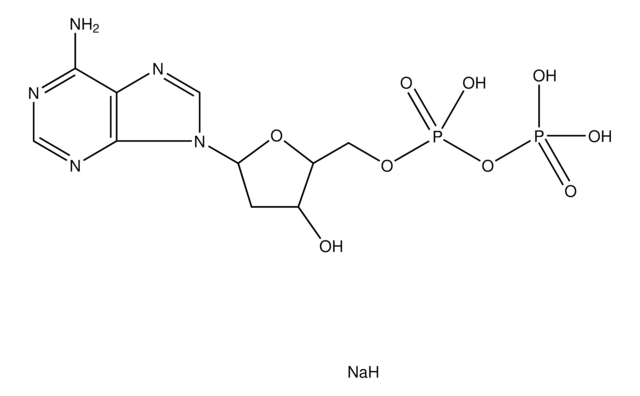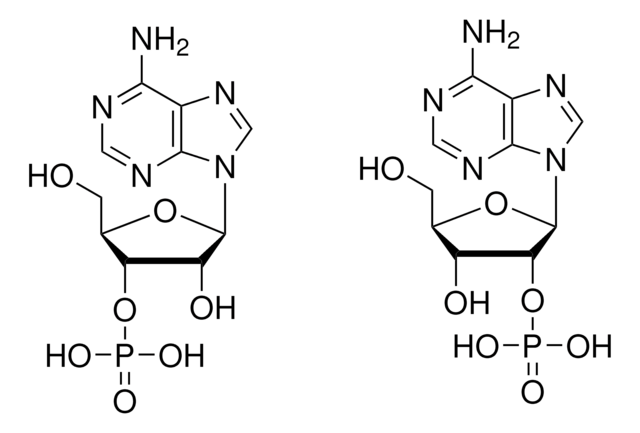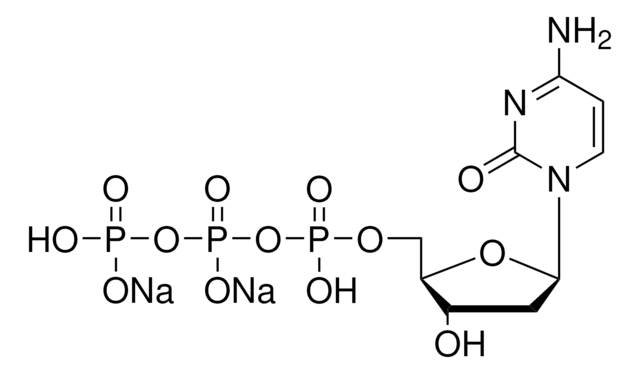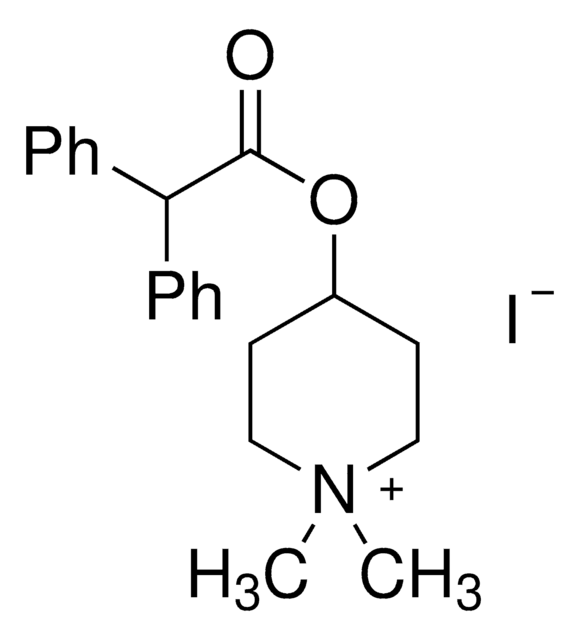Key Documents
D7750
2′-Deoxycytidine 5′-monophosphate
Sigma Grade, ≥95.0%
Synonim(y):
Deoxycytidylic acid, dCMP
About This Item
Polecane produkty
pochodzenie biologiczne
synthetic
Poziom jakości
klasa czystości
Sigma Grade
Próba
≥95.0%
Postać
powder
rozpuszczalność
1 M NH4OH: 50 mg/mL, clear, colorless
temp. przechowywania
−20°C
ciąg SMILES
NC1=NC(=O)N(C=C1)[C@H]2C[C@H](O)[C@@H](COP(O)(O)=O)O2
InChI
1S/C9H14N3O7P/c10-7-1-2-12(9(14)11-7)8-3-5(13)6(19-8)4-18-20(15,16)17/h1-2,5-6,8,13H,3-4H2,(H2,10,11,14)(H2,15,16,17)/t5-,6+,8+/m0/s1
Klucz InChI
NCMVOABPESMRCP-SHYZEUOFSA-N
Szukasz podobnych produktów? Odwiedź Przewodnik dotyczący porównywania produktów
Opis ogólny
Zastosowanie
Kod klasy składowania
11 - Combustible Solids
Klasa zagrożenia wodnego (WGK)
WGK 3
Temperatura zapłonu (°F)
Not applicable
Temperatura zapłonu (°C)
Not applicable
Środki ochrony indywidualnej
Eyeshields, Gloves, type N95 (US)
Certyfikaty analizy (CoA)
Poszukaj Certyfikaty analizy (CoA), wpisując numer partii/serii produktów. Numery serii i partii można znaleźć na etykiecie produktu po słowach „seria” lub „partia”.
Masz już ten produkt?
Dokumenty związane z niedawno zakupionymi produktami zostały zamieszczone w Bibliotece dokumentów.
Klienci oglądali również te produkty
Nasz zespół naukowców ma doświadczenie we wszystkich obszarach badań, w tym w naukach przyrodniczych, materiałoznawstwie, syntezie chemicznej, chromatografii, analityce i wielu innych dziedzinach.
Skontaktuj się z zespołem ds. pomocy technicznej